Historical Photos: Hollis Easter Lily Farm
It was once said Bermuda was known as “The Easter Isle” for a million good reasons — that was the estimated size of the island’s annual crop of lilies when the industry was at its peak.
Established in 1880, the island’s trade in the gleaming, pure-white Eastertime bloom was one of Bermuda’s most lucrative export industries for decades.
Malcolm Hollis was one of Bermuda’s most prominent lily growers and exporters. He was born in November, 1885 the son of Mr. and Mrs. William Aldgate Hollis. He farmed extensively in many parts of Bermuda for over 50 years and was active right up until the time he died.
His first farming endeavour was when he and his brother Ross took a dinghy and a barrel of potatoes to Cooper’s Island and rented it for a year or so and transported their crops back and forth to St. George’s and St. David’s by boat.
During the First World War (1914-18), his farm was situated where the current St. David’s Primary School is located and which before that was well known as Bermuda’s Pilot Station. During the war years this farm provided victuals for soldiers stationed at the St. David’s Head. It was during this period that Mr. Hollis commenced lily growing.
Following the end of the First World War, the Government of the day decided to compulsorily purchase that farm from Mr. Hollis to turn it into an isolation hospital.
Mr. Hollis then moved to a farm further to the west in St. David’s and known as the Beehive Farm which he farmed again until that property was compulsorily purchased during the Second World War to be leased to the US Government for the purposes of building Kindley Airforce Base.
Mr. Hollis then concentrated his farming at his farm in Smith’s Parish between Harrington Sound and Knapton Hill and known as Harrington Harrissii Farm.
The other great lily growers of the first half of the last century included Reeve Smith and his brother Howard of Stokes Point, St. George’s, Arthur Wellington West of Shelly Bay, the Outerbridge family of Knapton Hill.
Both before and after the Second World War Mr. Hollis exported all types of agricultural produce to the United States and exported lily flowers and bulbs to US, Canada, England, Europe and even Cuba. In 1954 Mr. Hollis shipped 60 cases of lily bulbs to Robert Tucker & Company in London to be planted in London’s famed Hyde Park.
The life of a lily farmer was year-round. The bulbs were first planted in September and cared for after the stems broke through the surface until finally by Easter they came into bloom.
Following the sale of the stems either by way of local sales or by way of shipment overseas, the stems were allowed to wither and die so that the source of the white Easter lily blooms, the bulb, could be dug during the summer when they are cleaned and had their roots cut close to the bulb. These golden yellow bulbs were then graded according to size and packed in wooden boxes and covered with white Bermuda quarried sand ready for shipment. A box of bulbs packed with sand weighed approximately 125lbs.
The size of the bulb for export was measured by circumference and varied from six inches to up to 13 inches. The size of the bulb to a great extent was determined by its age. A six inch bulb would have been at least four years old and a 13 inch bulb more than 10 years old.
Mr. Hollis specialised in a type of Bermuda Easter Lily called “The Harrissii”. The late Mr. Hollis’ theory on the origin of the Harrissii lily in Bermuda is that a convict at the Naval Dockyard wrote to a woman by the name of Mrs. Harris, who was related to the convict, to visit Bermuda from Scotland in the late 1700s.
She brought with her some lily bulbs which she gave to the late Mr. Hollis’ maternal grandfather, Mr. George Hollis, who was then a convict guard at Dockyard. It was Mr. George Hollis who then planted the bulbs in Smith’s Parish in the various fields that Mr. Malcolm Hollis later planted up until his death. Upon Mr. Hollis’ death in 1957, his son Malcolm, 30 years of age, took over the farm along with his elder brother William.
This was a difficult time for farming in Bermuda. Prior to the commencement of the Second World War it was said that 80 percent of Bermuda’s economy was derived from farming. By 1960 this had been reduced to 20 percent and many farms had closed.
The Harrington Harrissii Farm continued however but during this period the Easter lily crops declined substantially as a result of disease and the inability to rotate crops to new soil. By 1970 the long-established Bermuda Easter lily business was considered defunct.
However, Mr. Malcolm Hollis’ son, Malcolm, together with the Agriculture Department’s Dr. Walwyn Hughes — now a Senator — carried out a successful two-year experimental programme to find ways of improving the growing of Easter lilies with a view to reviving the export lily business.
Dr. Hughes attacked the problem from two fronts. One, to rid the lily crop of the adverse disease and also to find a way to control the blooming of the lilies so that they coincided with the different dates of Easter.
In 1970 a line was drawn in the sand. It was recognised that in 1950 a total of 25 acres of land were under commercial lily cultivation compared to a mere three acres in 1970. In 1950 1,700,000 flowers and 230,000 bulbs were exported. The total value of the industry in that year was $83,200. By 1970 the value of the industry amounting to the export of flowers alone had dropped to $17,203 and the Hollis’ were the only farmers still growing Easter lilies for commercial purposes.
Within two years Malcolm Hollis Jnr, together with Dr. Hughes, revived the local lily industry. They developed a new and hardy strain of lily coupled with special growing techniques that enabled them to time the blooming of the flowers precisely to Easter.
In Easter of 1971, the viable stems had increased dramatically. Malcolm Hollis Jnr had not given up and he had tried to improve his stock from scratch and by 1971 he was exporting 1,000 boxes of flowers from his fields.
In August of that year Mr. Hollis once again revived the shipment of bulbs abroad. By that date no bulbs had been shipped from Bermuda for almost 15 years. On August 30, 1971 the then local supply ship “Jasmine” sailed to New York with a container of some 15,000 lily bulbs from the farm of Mr. Hollis. This was the first export of bulbs since 1958. That summer also coincided with the last year on which Mr. Hollis’ son, Wendell Hollis, would work on the farm prior to leaving Bermuda to study law. It is of note that the lilies shipped in 1971 were packed in the same wooden boxes but packed in peat moss as opposed to sand which reduced the weight from 125 pounds to 70 pounds.
The following year the lily crop in Bermuda was described as magnificent. The focus by this stage had shifted to the shipment of stems of lilies abroad, wrapped in green wax paper and neatly packed into custom designed cardboard boxes which were flown to the US and Europe and then distributed.
The recipients of such boxes included the President of the United States, the Queen, the Prime Minister of England and his Cabinet and members of the Congress and Senate in the US in addition to many of the world’s well-known celebrities of the day.
In 1972 Mr. Malcolm Hollis Jnr said that the lily crop had never been better. In 1972, Mr. Hollis shipped 95 cases of bulbs amounting to some 20,000 bulbs to the United States.
One of the biggest perils to a Easter lily crop was a hail storm. One hail storm could ruin a crop for a year. The hail stones would cut and bruise the buds so that when they bloomed the flower was unsightly. Unfortunately for the lily grower the months of February and March – when the buds are coming into their own — is the period when Bermuda is most prone to hail storms.
This was not a problem for the farmer who was shipping the bulbs abroad, but clearly could ruin a year’s crop for the farmer who was shipping flowers. In 1973 this happened and the crop was destroyed by a hail storm which effectively made the shipping of the stems abroad impossible.
Once asked by a reporter whether the Easter lily business was lucrative, Mr. Hollis responded: “I wouldn’t say there’s a lot of money in it, I would just rather grow lilies than anything else. I’ve always grown them and my father grew them before me but a few years ago my crops became diseased, I had to fumigate the soil and acquire a new source of bulbs and start again. I am optimistic now the business will be booming for many years to come”.
Little did he know that within 10 years the business would be extinct.
In 1973 Bermuda suffered one of the worst droughts that it had experienced in history which had an adverse effect on all crops including the lily bulbs.
The growth in tourism and the advent of international business placed increasingly great economic strains on Bermuda farmers.
The value of land started to grow by geometrical progression to the point where many farmers felt it uneconomic to continue farming descended and to subdivide their farms and place them on the market for sale. This happened all over Bermuda and the availability of arable land fell into rapid decline.
The Bermuda Easter lily requires crop rotation so that it is not planted in the same field over and over. If it is, then it develops disease. In 1994 Dr. Ernie Wang, the then plant pathologist and plant quarantine officer for the Department of Agriculture, discovered and identified the diseases that were attacking the Bermuda Easter lilies.
The viruses affected all parts of the lily from the roots through the bulb and up to the stem. Although certain methods were tried to eradicate the virus including methods for fumigating the soil prior to planting, they were unsuccessful and by the early 1980’s the lily crop was in rapid decline.
In 1975 Dr. Hughes said “there are not many Easter lilies in bloom and there are not many period.”
Following the passage of the Bermuda Development and Planning Act 1974, Bermuda went through an overall rezoning and unfortunately the main farm for lily growing at the time, the Harrington Harrissii farm in Smith’s Parish was significantly subdivided between the children of the late Malcolm Jesse Giles Hollis, which dealt the death blow to the onward production of the lily crop.
One of Mr. Hollis’ most valued activities was that each year at the request of the Governor, he would prepare a box of his best Bermuda Easter lily stems for shipment to the Queen. Her Majesty greatly enjoyed the receipt of such flowers and annually wrote a letter of thanks to Government House, a copy of which was passed on to Mr. Hollis each year.
In the fall of 1976, Bermuda suffered an extremely wet period and Mr. Hollis predicted a shortage of lilies for at least the next four years. One-third of his lily bulbs rotted in the field. Just as the drought in 1973 had been regarded as the worst in memory, in December of 1976 Mr. Hollis said that he couldn’t remember a year that had been as bad as that one.
He said the rain has come at the wrong time of year and it will take me three or four years to build back my stock “the lilies are going to be very scarce this year and for the next few years.” Lilies are not ready for sale until they are approximately four years old. In 1976, Mr. Hollis estimated that it would him four years to build his stock back.
That never happened. By 1980 Mr. Hollis was out of the lily business growing just enough stems for friends and family and for the annual box for the Queen.
By 1990 Mr. Hollis had retired from the farming business and gave such lily bulbs as he had left to Mr. Joe Pacheco who together with his sons Roger and Joey farmed the Locust Hall Farm in Devonshire and did, for a period of time, make a valid attempt to revitalise the industry.
Mr. Pacheco and his sons also inherited the right and the honour of taking over the shipping of the annual box of Bermuda Easter lilies to the Queen. Mr. Malcolm Hollis died unexpectedly on April 27, 1994 shortly after Easter and his coffin was bedecked with Bermuda Easter lilies provided by the Pachecos’ farm, Locust Hall.
Unfortunately, when contacted this year to provide even a few lilies for Mr. Hollis’ grave they said that the lilies were now all gone, having died of disease.
All photos [taken from 1928-1971] courtesy of the Hollis family, click to enlarge:
Read More About
Category: All, Environment, History, Most Popular, Photos
Comments (9)
Trackback URL | Comments RSS Feed
Articles that link to this one:
- Easter Lilies To Be Sent To The Queen | Bernews.com | March 26, 2013
- Historic Video: Bermuda Easter Lily Farm | Bernews.com | March 31, 2013

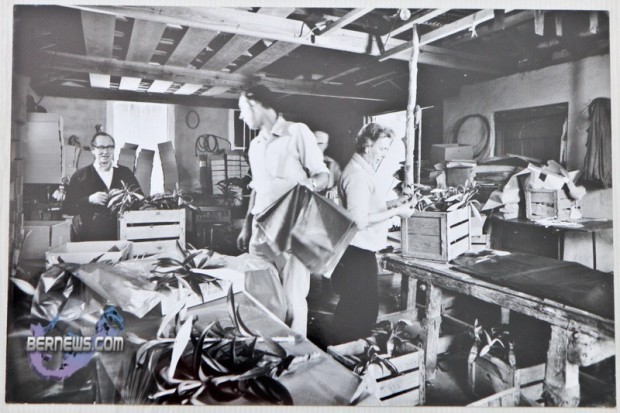
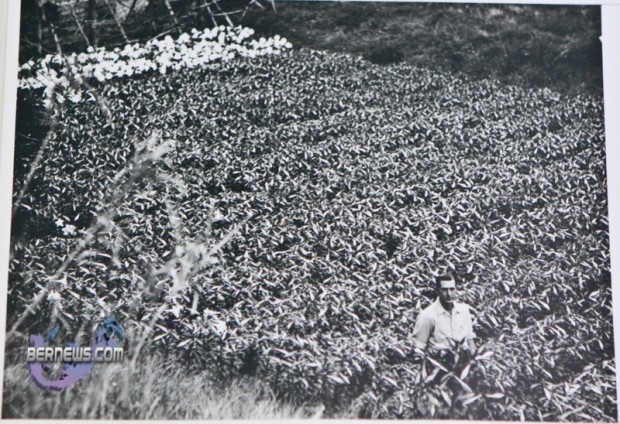
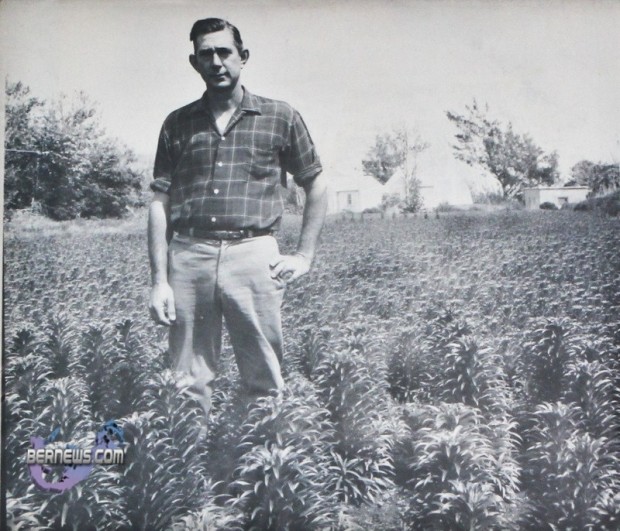
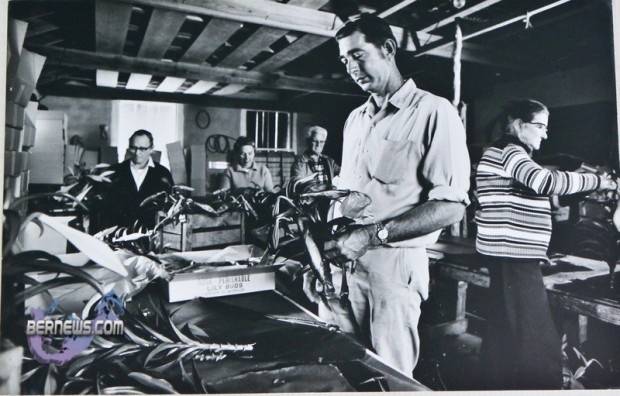

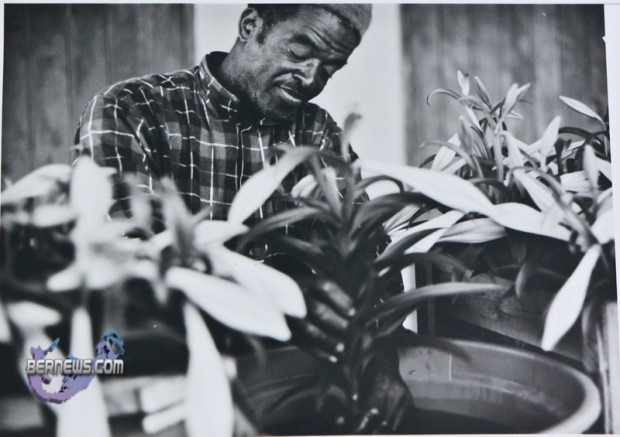



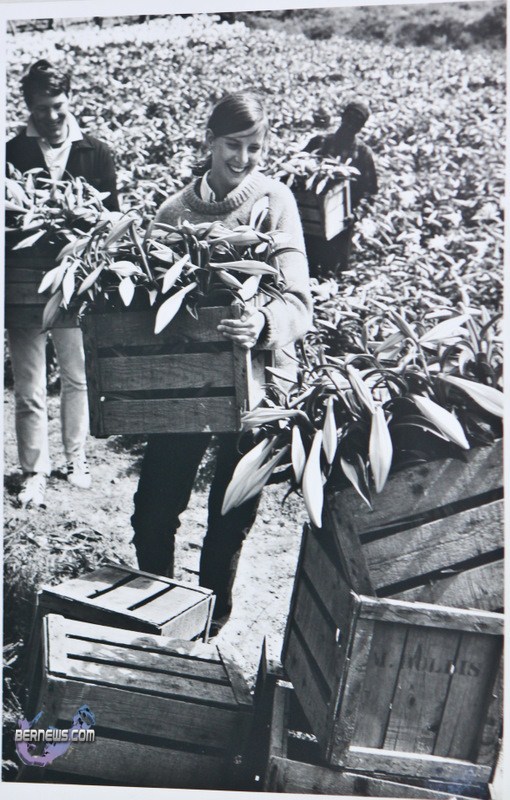


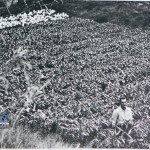
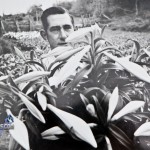
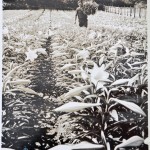
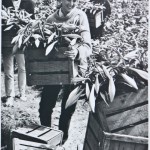

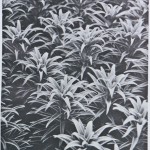





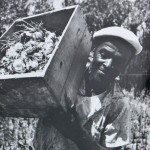
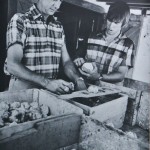



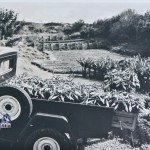

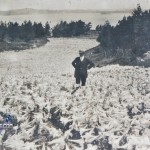
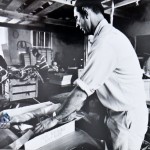


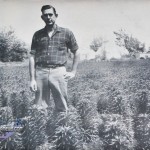

Bernews I have enjoyed reading this article on Easter day. How appropiate ! Thanks so much for sharing a part of our unique Bermudian history. HAPPY EASTER !!! To the entire Bernews team.
Beautiful bye gone days . . .thank you for those wonderful memories!
amazingl!
Thanks Bernews and Wendell: that is an awesome part of Bda’s history to share!
Forget the ‘beautiful bye gone days’, we need to concentrate on making Bermuda beautiful again. The government parks people should be planting Easter lilies all along the roadsides, instead of wasting money cutting the grass, like on the southshore road, just making us look like an American suburb.
They could save 6 months cost by not cutting the grass from October to late May to let Easter lilies, Bermudianas, freisias, paperwhites and other wildflowers bloom. The tourists would love and and really “feel the love” and smell it too, as well as see it.
We cannot get Mr. Hollis’ farm back, but we can certainly replant annual flowers on the hundreds of acres of national parkland.
By the way, how many Bermuda cedars did the government plant on parkland last year or in the last decade?
HAPPY EASTER BERNEWS
An excellent, well written and informative article. Well done!